2016 Intelligent Sensing Summer School
| Where: BR 4.01/4.02, Bancroft Road building, Mile End Campus |
| 15 September | |||||||
| 13:30-13:45 | Registration | ||||||
| 13:45-14:00 | Welcome, opening and introduction to competition for the best PhD presentation | ||||||
| 14:00-15:00 |
The emergence of e-textiles
Imagine a piece of fabric that can be tapped or swiped just like you would a touch screen? Or if sensors woven into the cover of your chair told you when you were slouching? Electronic textiles are where computer science, electrical engineering, textiles and design all come together. This talk will discuss its rise and how it could change the way we interact with the world around us.
|
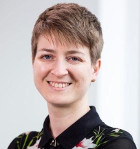 Rebecca Stewart
Rebecca Stewart
|
Smart materials for sensing | ||||
| 15:00-15:45 |
Sketch-a-net that beats humans
A multi-scale multi-channel deep neural network framework that, for the first time, yields sketch recognition performance surpassing that of humans. The network not only delivers the best performance on the largest human sketch dataset to date, but also is small in size making efficient training possible using just CPUs.
|
 Qian Yu
Qian Yu
|
Sensing & people
chair: Dr Ryan Layne |
||||
|
Symmetry-aware human shape correspondence using skeleton
An extraction method for symmetry-aware human shape correspondence is presented. The method addresses the symmetric flip problem which exists in establishing correspondences for intrinsically symmetric models, and improves the accuracy of the final corresponding pairs.
|
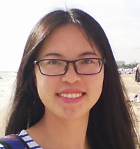 Zongyi Xu
Zongyi Xu
|
||||||
|
Design space exploration for adaptive privacy protection in airborne images
Airborne cameras on low-flying unmanned vehicles introduce new privacy challenges due to their mobility and viewing angles. The focus of this paper is on face recognition from airborne cameras and the exploration of the design space to determine when a face in an airborne image is inherently protected, that is when an individual is not recognizable.
|
 Omair Sarwar
Omair Sarwar
|
||||||
| 15:45-16:00 | Coffee break | ||||||
| 16:00-16:45 |
Matrix decomposition methods for audio analysis
Audio analysis - also called machine listening - involves the development of algorithms capable of extracting meaningful information from audio. This talk will cover current research on matrix decomposition methods for audio analysis, with applications to sound event detection and automatic music transcription - both of which are considered fundamental and yet open problems.
|
 Emmanouil Benetos
Emmanouil Benetos
|
Auditory sensing | ||||
| 16:45-17:30 |
Averaging of social cues using equivalent noise
The direction of social attention from groups can provide stronger cueing than from an individual. This talk presents how information about a crowd can be reliably judged by averaging head rotation and gaze direction from groups of faces.
|
 Joseph Florey
Joseph Florey
|
Social sensing chair: Dr Lin Wang |
||||
|
Video semantic clustering with sparse and incomplete tags
Clustering tagged videos into semantic groups is important but challenging due to the need for jointly learning correlations between heterogeneous visual and tag data. This paper proposes a method for accurately clustering tagged videos based on a novel model capable of correlating structured visual and tag information.
|
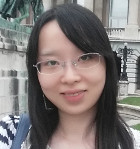 Jingya Wang
Jingya Wang
|
||||||
|
Analysis of peer reviews in music production
The mix is an essential part of the music production process, which has an important but poorly understood impact on the perception of a record. In this work an annotated collection is employed to assess which instruments, types of processing and mix properties are the most apparent when comparing mixes.
|
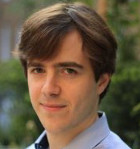 Brecht De Man
Brecht De Man
|
||||||
| 16 September | |||||||
| 13:45-14:00 | Opening | ||||||
| 14:00-14:45 |
Open connect everywhere: A glimpse at the internet ecosystem through the lens of the Netflix CDN
Netflix has become a worldwide video-streaming platform and the source of a large amount of the Internet traffic. Through extensive measurements, this paper reveals Netflix's footprint, its traffic patterns and volumes. The analysis of Netflix's server deployment exposes the diversity of the Internet ecosystem world-wide.
|
 Timm Bottger
Timm Bottger
|
Sensors & networks chair: Dr Xiatian Zhu |
||||
|
Prioritized target tracking with active collaborative cameras
Mobile cameras on robotic platforms can support fixed multi-camera installations to improve coverage and target localization accuracy. This paper proposes a novel collaborative framework for prioritized target tracking that complement static cameras with mobile cameras, which track targets on demand.
|
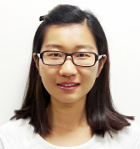 Yiming Wang
Yiming Wang
|
||||||
|
Neighbour consensus for distributed visual tracking
This paper proposes N-consensus, an algorithm that reduces the cost of the consensus process for distributed visual target tracking without compromising on tracking accuracy.
|
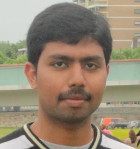 Sandeep Katragadda
Sandeep Katragadda
|
||||||
| 14:45-15:30 |
On the performance of compressed sensing-based methods for millimeter-wave holographic imaging
This paper investigates compressed sensing (CS) based methods for reducing data-acquisition time in 2D millimeter-wave holographic imaging systems. Specific attention is paid to situations where the array element spacing does not satisfy the Nyquist criterion due to physical limitations.
|
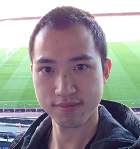 Qiao Cheng
Qiao Cheng
|
Imaging & novel sensors chair: Dr Fabio Poiesi |
||||
|
Robust multi-dimensional motion features for first-person vision activity recognition
A robust multi-dimensional motion features for human activity recognition from first-person videos is proposed. Results on multiple datasets demonstrate that the proposed feature representation outperforms existing motion features, and importantly it does so independently of the classifier.
|
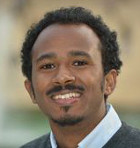 Girmaw Tadesse
Girmaw Tadesse
|
||||||
|
Adaptation to tilted scenes
When adaptation distorts the apparent feature content of subsequently viewed images, it suggests that our visual system has neural mechanisms selective for those features. This work examines whether our visual system has a putatively high-level mechanism selective for the spatial orientation of scenes that is distinct from its low-level mechanisms encoding the orientations of gratings.
|
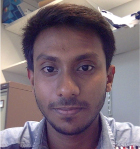 Ahamed MH Ismai
Ahamed MH Ismai
|
||||||
| 15:30-15:45 | Coffee break | ||||||
| 15:45-16:30 |
Combining signal processing and computer modelling and simulation in cardiac arrhythmia studies One of the main challenges in cardiac electrophysiology is to understand the spatiotemporal characteristics of cardiac arrhythmias. Signal processing methods have been developed to study cardiac arrhythmias based on electrical recordings such as the ECG and, in parallel, computer modelling and simulation techniques have provided insight into the nature of cardiac arrhythmias by allowing to reproduce them in a virtual environment. In this talk, I will discuss how we are combining signal processing and computer modelling and simulation to investigate cardiac arrhythmias and develop new diagnostic tools.
|

Jesús Requena Carrión |
Sensing & biology | ||||
| 16:30-17:30 |
Spatiotemporal characteristics of human gaze processing The accurate perception of another person's gaze underlies successful social interactions. To date, most research has examined how we perceive other people's gaze direction, with reports suggesting that normal participants can estimate the direction of gaze of a human subject with very high precision. However, social interactions are inherently dynamic. How long a person looks is as least as important as where a person is looking. I will discuss recent behavioural and eye tracking data that examine these issues of spatiotemporal gaze processing.
|
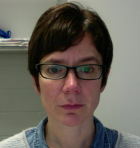
Isabelle Mareschal |
|||||
| 17:30-17:40 | Best PhD presentation result & award ceremony | ||||||
| 17:40 | Meeting with mentors followed by drinks and nibbles | ||||||
| Logistics | |||
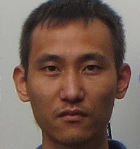
|
|||

|

|

|

|

|

|

|

|

|